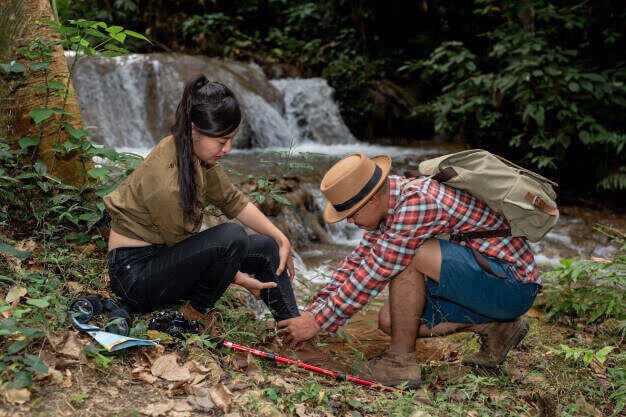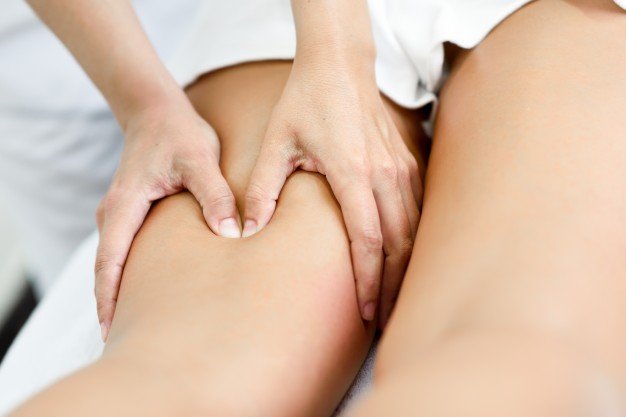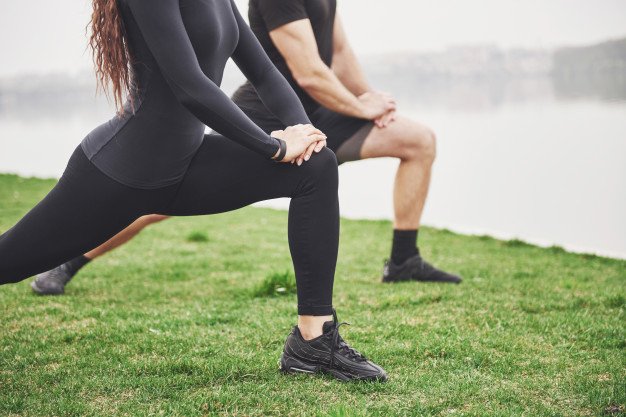Menu
Spending time outdoors can help reduce your stress and keep you healthy, and hiking is undeniably a great way to achieve it. Hiking is not just about making your body fit and spend quality time with family and friends. It is also an opportunity to appreciate nature, clear your mind, explore, and have a great conversation with your company.
The best part about hiking is anyone can enjoy it, including families with children. It doesn't matter whether it's your first time to hike or you are an experienced hiker. Whatever level of experience you have in hiking, it's essential to be aware of the most common injuries such as knee pain after hiking, as well as how to prevent and relieve them effectively.

Knee pain is widespread among avid hikers as they usually spend hours on rocky, uneven trails. Whether it's mild exhaustion or an underlying condition from your previous hike, many conditions can cause joint problems after hiking. These following conditions are a few causes of knee pain after hiking that you should know:
If you've been living a sedentary lifestyle and suddenly decide to venture on hiking, expect yourself to go home with bad knees. The main culprit? Probably your tight glutes, or also described as the 'sitting plague.' People sitting for extended hours often experience this condition, most commonly office workers who sit behind their desks, spending at least eight hours a day.
Since the glutes are weak, it pulls on the knee, causing pain after a long hiking day. Your hips' flexors also become tight, allowing you to make complete and twisty movements with your hips. It will also compromise your leg muscles; hence, burdening your knees excessively.
Knee tendonitis is distinguished by sharp pain above and below the kneecap, accompanied by a burning and swelling sensation.
Tendonitis is a result of an accumulated injury on the knee. If the tendons get overused, it will start manifesting symptoms. Tiny tears will generate problems on your knees, making it feel weak and painful, despite when your tendons aren't broken.
The possibility of osteoarthritis is likely when you're aging, and if you're a senior and an avid hiker, you might be mindful of your knees.
Osteoarthritis is a degenerative condition that occurs over time on your joints due to the cartilage's thinning, and if you go for hikes, symptoms might worsen.
Anterior Cruciate Ligament (ACL) tears are commonly feared not just by hikers, but also by athletes. While ACL tear highly affects athletes' careers, hikers may endure the pain for months to heal completely. After your recovery, it may not be easy to restore your knees' same strength and durability.
Once an ACL tears, it will produce a popping sound. At the same time, it will cause unbearable pain to the person. Also, after a few hours, you will notice intense swelling on your affected leg.
An overused joint is one of the most common problems hikers endure, which causes mild to moderate pain in the knee area. It can be accompanied by mild swelling as well that usually goes off in a day or two. Although this isn't a severe condition, it should be paid attention when it starts to trigger as it is subjecting your joints, leading to other joint problems.
Persistent pain on the kneecap is a sign of the cartilage thinning out and, over time, may point to osteoarthritis.

Recovery is vital after a strenuous activity like hiking to allow sore muscles to restore from previous hiking. Hikers experience this dilemma due to the delayed onset of muscle soreness (DOMS). Typically, it begins a day after.
It's our bodies' natural reaction when we reached beyond the usual limit we should be exerting, and commonly lasts for 2-3 days.
Fortunately, there are a few ways to relieve knee pain from hiking:

Massage isn't just soothing and therapeutic, but it also improves blood circulation while relaxing the tired muscles. Focus on the parts where the tenderness is present, like the legs and feet.
If you've got a budget, you can also opt for a massage therapist since they're knowledgeable about easing the body's soreness.

Hiking is challenging, especially when trails head to the mountains. The climbing part isn't much of a concern for others, but the downhill trail indeed is a hassle.
Doing a mild stretching after a long hike helps the muscles to recover. After a day of tumbles and slips from the rocky trails, allowing your body to stretch encourages faster recovery.
Some recovery activities you might consider are biking, swimming, and aerobics.

Your body, especially your feet, deserve a break after a long day outdoors. The moment you arrive home, you feel exhausted, and sleep naturally comes after that. Sleeping is one of the best remedies to recover your body from a strenuous hike. So, lie down, loosen up, and keep yourself relaxed.

Medication is an option if you opt for a quick, temporary recovery. There are various OTC options, including any types of NSAIDs - but shouldn't be taken for too long. Proper consultation from a medical professional is needed if you need prescribed pain relievers and in case if you're currently taking other medications.

Bringing some energy bars and ready to eat stuff can help you go through hunger while on a hike. But, you'll usually end up craving your favorite foods after hiking. Make it a habit incorporating foods rich in protein, fat, and carbohydrates to keep you fueled during and after hiking. Foods like pasta, chicken, smoothies, hot chocolate, and rice are great to refuel your energy.

Rewarding yourself with a cold dip in the tub or ice bath after a long day under the sun's scorching heat helps reduce your body's soreness.
You can even try contrast therapy, a process where you have to shower while alternating cold and warm water. This method aims to expand the blood vessels and wash out waste in the tissues.

RICE (Rest, Ice, Compression, Elevate) is a method recommended by doctors for individuals suffering from injuries or even strains or sprains in their ankles. This method is a simple first aid technique that helps lessen the swelling, alleviate pain, and promote quick healing. If you have minor injuries, especially knee pain after hiking, you can treat them using this method in the comfort of your home.
Pain signifies that there's something off in your body, and as soon as you feel hurt, stop what you're doing and take a rest. Whether you have mild to severe injuries, lifting or exerting too much pressure that involves your ankles can worsen and slow down your recovery. Avoid putting too much weight on the area where you feel the pain for at least 24 to 48 hours.
Ice is a tried and tested means for reducing pain and swelling.
Get an ice pack and cover it with an absorbent towel and apply it to the injured area for 15-20 minutes every 2-3 hours during your first 24-48 hours of obtaining the injury.
Compression is a method of wrapping the injured area to prevent it from swelling. Gently wrap the affected area with an elastic medical bandage, but not too tight as it will interrupt blood flow.
Once the skin underneath the wrap becomes blue or feels cold and numb, loosen the bandage. Seek immediate medical help if these symptoms persist.
Elevating the part where the sore persists above the heart level can reduce pain and swelling. Knee pain after hiking, such as ankle strains or sprains, commonly happens among hikers and backpackers. It's recommended to keep the affected area raised. Elevating the knees and placing a knee pillow underneath while lying on the bed can help lessen the pain.

If any of these methods don't work, the best solution would be setting an appointment with your physician to precisely determine your joints' problem and obtain a suitable solution.
Avoid self-medication if the pain persists and is too unbearable. Seek immediate medical advice, especially if you're an avid hiker, so you'll be exactly informed of what's happening on your knees.
Muscle pains are something they call "the pains of success." Knee pain after hiking can easily be treated if given immediate attention. Mild knee pain shouldn't be overlooked as it will likely worsen, especially if you already had a more severe underlying condition.
Choose whatever suits you among these tips. The healing process will only take you 3-4 days maximum, in which eventually, you'll be able to hit the trail again!